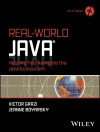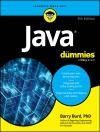The Spring framework is growing. It has always been about choice. Java EE focused on a few technologies, largely to the detriment of alternative, better solutions. When the Spring framework debuted, few would have agreed that Java EE represented the best-in-breed architectures of the day. Spring debuted to great fanfare, because it sought to simplify Java EE. Each release since marks the introduction of new features designed to both simplify and enable solutions. With version 2.0 and later, the Spring framework started targeting multiple platforms. The framework provided services on top of existing platforms, as always, but was decoupled from the underlying platform wherever possible. Java EE is a still a major reference point, but it’s not the only target. OSGi (a promising technology for modular architectures) has been a big part of the Spring Source strategy here. Additionally, the Spring framework runs on Google App Engine. With the introduction of annotation-centric frameworks and XML schemas, Spring Source has built frameworks that effectively model the domain of a specific problem, in effect creating domain-specific languages (DSLs). Frameworks built on top of the Spring framework have emerged supporting application integration, batch processing, Flex and Flash integration, GWT, OSGi, and much more.
Cuprins
to Spring.- Advanced Spring Io C Container.- Spring AOP and Aspect J Support.- Scripting in Spring.- Spring Security.- Integrating Spring with Other Web Frameworks.- Spring Web Flow.- Spring @MVC.- Spring REST.- Spring and Flex.- Grails.- Spring Roo.- Spring Testing.- Spring Portlet MVC Framework.- Data Access.- Transaction Management in Spring.- EJB, Spring Remoting, and Web Services.- Spring in the Enterprise.- Messaging.- Spring Integration.- Spring Batch.- Spring on the Grid.- j BPM and Spring.- OSGi and Spring.
Despre autor
Gary Mak, founder and chief consultant of Meta-Archit Software Technology Limited, has been a technical architect and application developer on the enterprise Java platform for more than seven years. He is the author of the Apress books Spring Recipes: A Problem-Solution Approach and Pro Spring Source dm Server. In his career, Gary has developed a number of Java-based software projects, most of which are application frameworks, system infrastructures, and software tools. He enjoys designing and implementing the complex parts of software projects. Gary has a master’s degree in computer science. His research interests include object-oriented technology, aspect-oriented technology, design patterns, software reuse, and domain-driven development. Gary specializes in building enterprise applications on technologies including Spring, Hibernate, JPA, JSF, Portlet, AJAX, and OSGi. He has been using the Spring Framework in his projects since Spring version 1.0. Gary has been an instructor of courses on enterprise Java, Spring, Hibernate, Web Services, and agile development. He has written a series of Spring and Hibernate tutorials as course materials, parts of which are open to the public, and they’re gaining popularity in the Java community. In his spare time, he enjoys playing tennis and watching tennis competitions.












